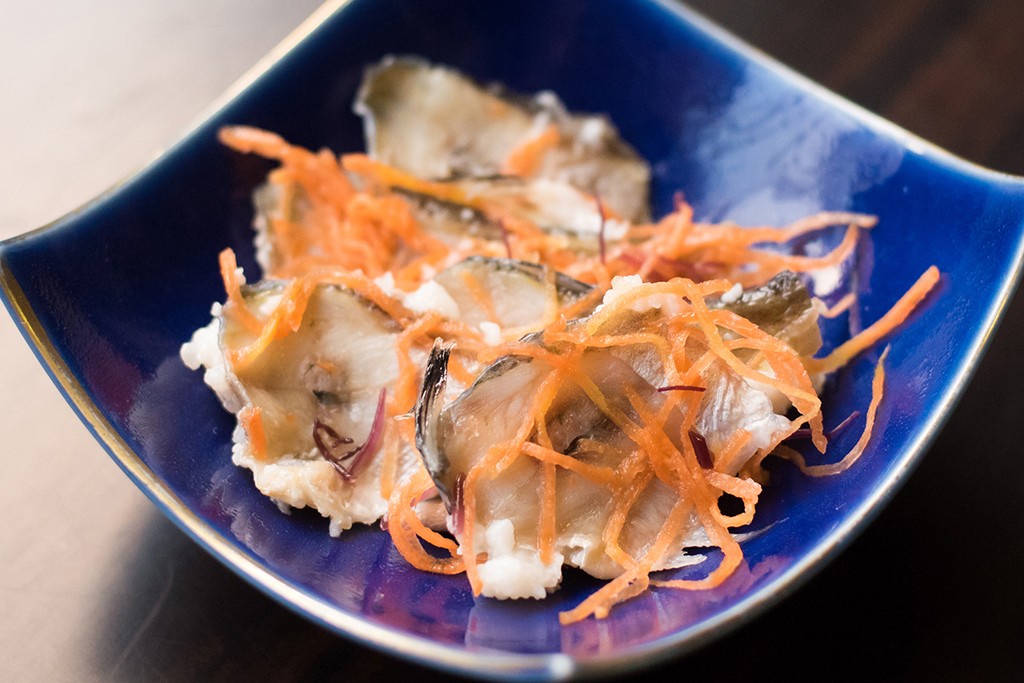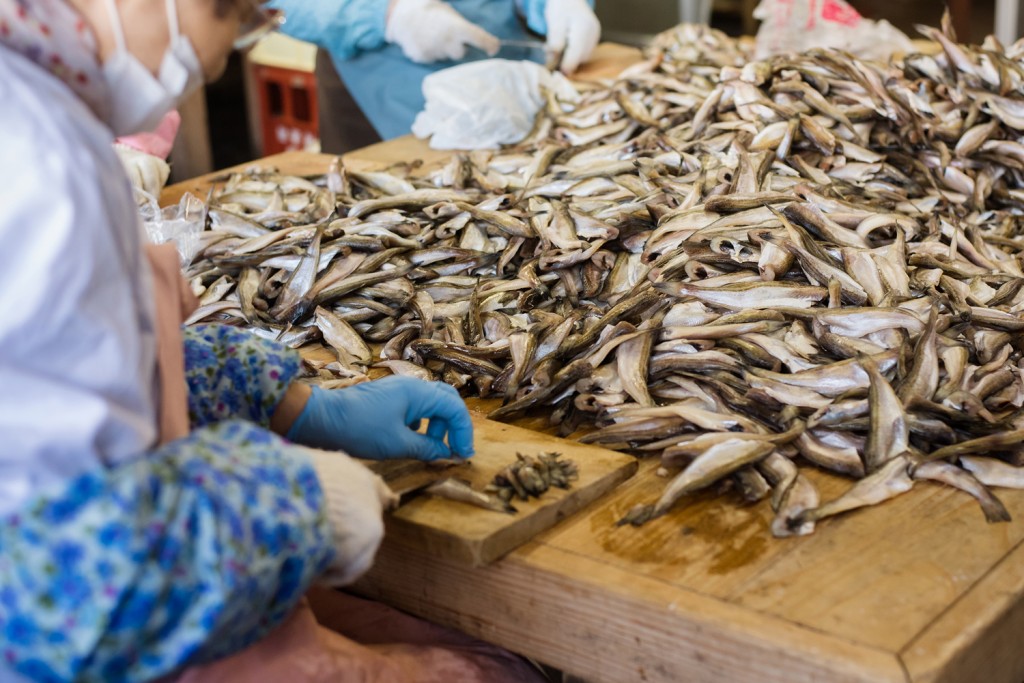TRAVELOGUE Akita
Food Culture of the Snow Country Akita’s cuisine of preserved foods was born from the prefecture’s long, harsh winters
- text : Nahoko Kodama
- photo : Yasushi Ito
- edit : Seiji Takeuchi from nano.associates
chapter 3“Hatahata-zushi: a traditional dish of preserved winter fish”
The Japanese sandfish (hatahata) is the prefectural fish of Akita and widely beloved by locals as the herald fish of winter. Although sandfish tastes great when boiled, grilled, or otherwise cooked normally, with a little extra work it becomes a preserved dish eaten throughout the year. We visited the Miura Yonetaro Shoten shop, a hatahata-zushi (sandfish sushi) producer located in front of the fishery in the city of Nikaho, and spoke to store representative Etsuro Miura. He said that Miura Yonetaro Shoten used to only pickle sandfish in salt for preservation before they began to produce hatahata-zushi in his great-grandfather’s generation. Mr. Miura represents the 13th generation at a long-standing shop dating back over a century.
Hatahata-zushi is a traditional dish created by people in olden times for preservation through the winter, in which they tended to run low on protein. Though made on the coasts of Akita Prefecture, this type of sushi is characterized by differences in ingredients (other than sandfish) and flavors from region to region. Whether it be pickled in salt and rice with a large helping of vegetables or lightly-pickled with just salt and rice, there is a wide variety of types of hatahata-zushi. The hatahata-zushi made by Miura Yonetaro Shoten is carefully pickled with high-quality malted rice, funori seaweed, carrots, and yuzu for a faintly sweet and elegant flavor.
The hatahata-zushi production process is extremely intricate. “First, we wash the fresh sandfish with water, place them in a tank, then salt them and leave them to sit for four to five days. Once the salt has soaked in sufficiently, we remove the sandfish from the tank and begin cutting it,” says Mr. Miura. At this stage, several workers take their knives and slice each fish by hand into pieces, and the highlight here is the sheer quantity of fish laid out on the worktables. “After cutting is complete, we soak the slices for five days in a mixture of vinegar and water.” This serves to soften up the bones and skin of the fish so that they can be eaten whole. The soaked sandfish are then thoroughly drained and lined up in 20-kilogram barrels with malted rice and other ingredients and covered with bamboo leaves. This mixture is fermented repeatedly through stages until the sushi ingredients are finally complete.
“We value the sake-like flavor of malted rice,” Mr. Miura says. Indeed, finished hatahata-zushi has a gentle and refreshing sweetness to it. The shop is extremely selective in the malted rice selected for use is the fermentation process, and apparently tried a number of different types before deciding on the present one. Now that they have discovered a truly great malted rice, they say their product is even better received now than it used to be. This bespeaks the sizeable role played by malted rice in determining the deliciousness of hatahata-zushi. It can be eaten either as-is or with wasabi-flavored soy sauce, and it goes especially well with sake. It can also be eaten in hot pot dishes or grilled. Originally eaten on sunny days, even today the custom of using the sushi at Shinto rituals persists in Mr. Miura’s local area.
“The people of Akita feel as though sandfish is in our DNA itself. Even as fishing hauls decrease dramatically and there are bans on fishing altogether, we still import sandfish all the way from overseas. We feel so strongly about it that we can’t get through the year without eating sandfish. As long as sandfish exist, the custom of eating them probably won’t disappear from Akita.”




